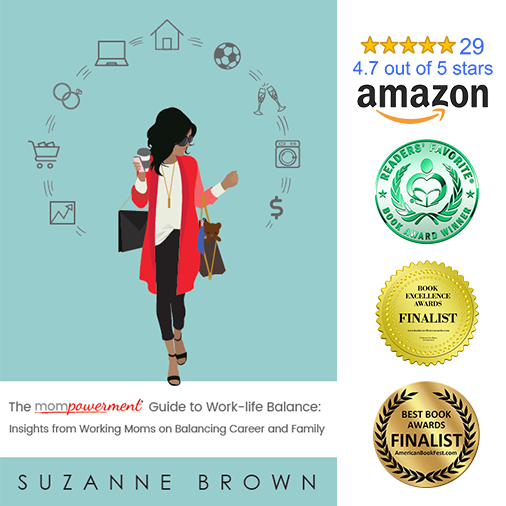
One of the few good impacts of the pandemic is that the curtain was pulled back on all that working mothers do. The challenge is that working moms are still managing the lion’s share of the mental load. It’s a lot, day in and day out. It needs to change. It comes down to this. Working moms must share the mental load.
What is the mental load?
For everything you do, there is the stuff behind that task. And 86 percent of working moms handle everything at home related to children and household duties. It’s generally invisible stuff. As working moms, there is a lot of stuff behind the tasks your family sees. It’s like a running to-do list and encyclopedia of information about your family, their activities, and their preferences that are all in your head all the time. Now consider this mental load for everything you do at home and work. Yep, it can be overwhelming.
For example, your child plays soccer. That is the weekly activity. Behind that task is thinking through your child and family’s overall schedule, finding the right team where he or she is continuing to learn/develop skills and practice falls on the right day(s) in comparison to everything else you all have going on and figuring out how to coordinate life to get your child to practice. It’s knowing when to buy new shoes and what brands your child likes. And you probably know all or most of that off the top of your head. (And then repeat that for additional kids in your family.)
Understand what changes you want to make
If you want more equality at home and generally more relief, you must release the mental load. OK, you get it, so now what?
Let’s start with one thing that you must address upfront. The idea that your significant other “should know” doesn’t help. Unfortunately, our mind-reading abilities don’t exist. Shifting the mental road takes action. It won’t happen without you making changes.
Start with looking at the tasks you’re in charge of. OK, so now consider what it takes to get those tasks done. Now you see the true to-do list. Consider all the small pieces that make up a task or duty. It’s not the one item on your to-do list.
Great! Now it’s time to figure out what you enjoy, what to delegate (whole duty, not an individual task), and what can go away outright. Yes, some things might not need to be done. For example, maybe you can combine tasks and some things will literally fall off your list that went into one or both tasks.
These days, so much can be delegated to an outside resource from a housekeeper to someone to shop for groceries to even someone to pick up and return your dry cleaning to you. Delegation is incredibly important.
Now think through a few key questions as you write everything down and sort through the tasks and duties.
- What do you enjoy?
- Are there duties you’d like off your to-do list?
- What does your significant other (SO) enjoy?
- What things does your SO not want to do?
- How can your kids help?
- What takes up a lot of time that you don’t enjoy?
- Are there tasks you both do badly that you might want to outsource?
- What services are in your area?
- What is your budget? What services can you afford to outsource?
Learning to let go of the mental load
You’ve got your list of everything you must do. You understand you must release the mental load. Let’s talk tips to help working moms share the mental load. When you go to delegate at home, you must take one of two perspectives. Yep, there are two so it’s really one or the other. You must either completely delegate the duty/task and be OK with what it looks like when someone else does it differently. Option two is that you must be really specific in how you want it done.
Let me give you a hint here. You can’t be specific in every single thing you delegate. It’s not going to be well-received by the other person and it’s exhausting. You must let go of what it looks like and embrace a new way of doing it. And this is where good is good enough makes a difference.
Yes, learning to let go is hard. For a type-A personality (raising my hand here), this can be the hardest part of letting go of the mental load. You’re empowering your significant other, an adult family member, your child, or even a person/service you pay to take on something which means you lose that control. As you can imagine, letting go takes practice, especially at the beginning of handing over those reins.
Setting yourself up to let go
One really important aspect of releasing the mental load, whether at work or home, is sharing information. Often information is power. When it comes to managing and especially releasing the mental load, you want that power to be shared. Always. Find ways to share that information. Spreadsheets, meeting requests, email, MS Teams, Trello, Slack, etc. And there are so many tools now available to help you. All of these tools, resources, etc can facilitate sharing information.
What does this look like in practice? When I need my husband to set up an appointment, he asks for any parameters upfront (e.g., my child can’t miss a specific class or I have a conference on a specific day, so I can’t help out at all, etc.). He can see my boys’ activities on a shared calendar. And then he asks what I have on the calendar.
But this sharing of duties is constant. If we both receive an email from school, we will let the other know when we’ve handled it. That way the other person isn’t wasting time on a task that completed.
While this works for us, I know families who are on slack, including the kids. There are quick exchanges. I know families who use tools that help with all of this. Figure out what works for you and stick to it, but don’t be afraid to try something new as your needs change.
It takes time to share the mental load
I’d love to say that it’s all easy, but it’s not. You will have moments where you stumble or even fall back into old patterns. Don’t beat yourself up. Acknowledge the hiccup. Fix whatever the issue is. And then start sharing that mental load again. Give yourself grace that it won’t be an automatic shift when you decide it’s time to release the mental load.
My own path to sharing the mental load
I decided to launch my second book soon after launching my first book. To do that I needed more time in my day. The first thing I did was go to my husband. While we don’t have a 50/50 split, my husband is incredibly supportive at home and in my businesses. He fully supported my writing a second book. So I asked him point-blank what he wanted to take on from a list of things I chose that I thought he’d do well. He chose cooking. (He’s a great cook which is why this was on my list!)
That was a start, but not enough time. Here’s why it didn’t save me enough time. I still did the meal planning, put together the grocery list, bought groceries, and did the meal prep. He swooped in like a hero at the end and cooked. This really only saved me an hour each week since we don’t cook every night. (I highly recommend cooking for two nights with every meal you cook by the way.)
And then I interviewed Sonia Parekh for my second book and she talked about the mental load. I had an a-ha moment and realized it was time to let go of the mental load related to feeding our family. I hung up the phone and almost immediately talked to my husband.
That is when my husband began feeding our family with little input from me. Beyond occasional suggestions, I pretty much stay out of it, unless my husband asks me specifically to step in. And this is rare outside of his busiest time of the year. Cooking is usually all him. Again, thank goodness he’s good in the kitchen!
***************************************
Here’s what I want you to walk away with. Working moms must share the mental load. We must let go of being the one who does all the stuff. Having it all and feeling balanced doesn’t mean doing it all. It’s doable to release that mental load and it will take action. So, what is your first step? What is holding you back from releasing the mental load? Or maybe you’ve already released the mental load. What do this action and the subsequent result look like in your situation? Mompowerment readers are always looking for new inspiration from fellow working mamas like you.
Need help with starting the conversation on becoming better partners at home? I’ve got you covered. I created a guide to do this. Download your copy today!


